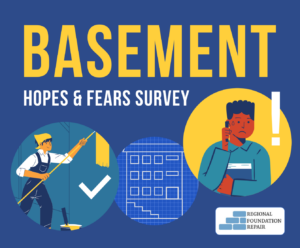
Looking for statistics on where basements are most prevalent in America and how the space is used most often? Great! You’re in the right place. For this campaign, the Regional Foundation Repair team conducted a custom study on basements across the country and analyzed the data to determine:
- In which states you’re most likely to find basements
- The most common basement problems reported across America
- The most frequent uses for basements in the country
- And much more!
Our team of foundation repair experts is constantly waterproofing basements, but we know they’re not the only foundation type that homeowners may need help with. In fact, basements are a near-ubiquitous home feature in some parts of the country, and they’re virtually nonexistent in other areas. With the real estate market in so much flux, the Regional Foundation Repair team wanted to know: are basements still a desired home feature in 2021? Do homebuyers seek them out? And how are Americans actually using their basements, especially in the age of COVID, where we’re staying home more often?
In order to find out, we conducted a survey of over 1,000 American homeowners on how they really feel about basements.
Table of Contents
- Methodology
- How Common Are Basements in the United States?
- Who Believes Basements Are Most Important?
- What Are Basements Used for Most Often in America?
- The General Opinion of Basements in America
- What Are the Most Common Basement Issues in America?
- Wrapping Up: Major Insights and Conclusions
Methodology
To accumulate the most accurate data possible, we surveyed 1,011 American homeowners of all genders, backgrounds, ages, and incomes about basements. Our team put together a list of what we felt were the most important questions regarding this foundation style.
The survey was conducted in November 2021 and all respondents were 18 years old and over. We then sorted all of the responses by state, age, and other criteria to get a good idea of Americans’ general opinion on basements, their usefulness, their value, and more.
Our top results are highlighted in the infographic below and expanded upon throughout this post. Read on to discover what we found!

